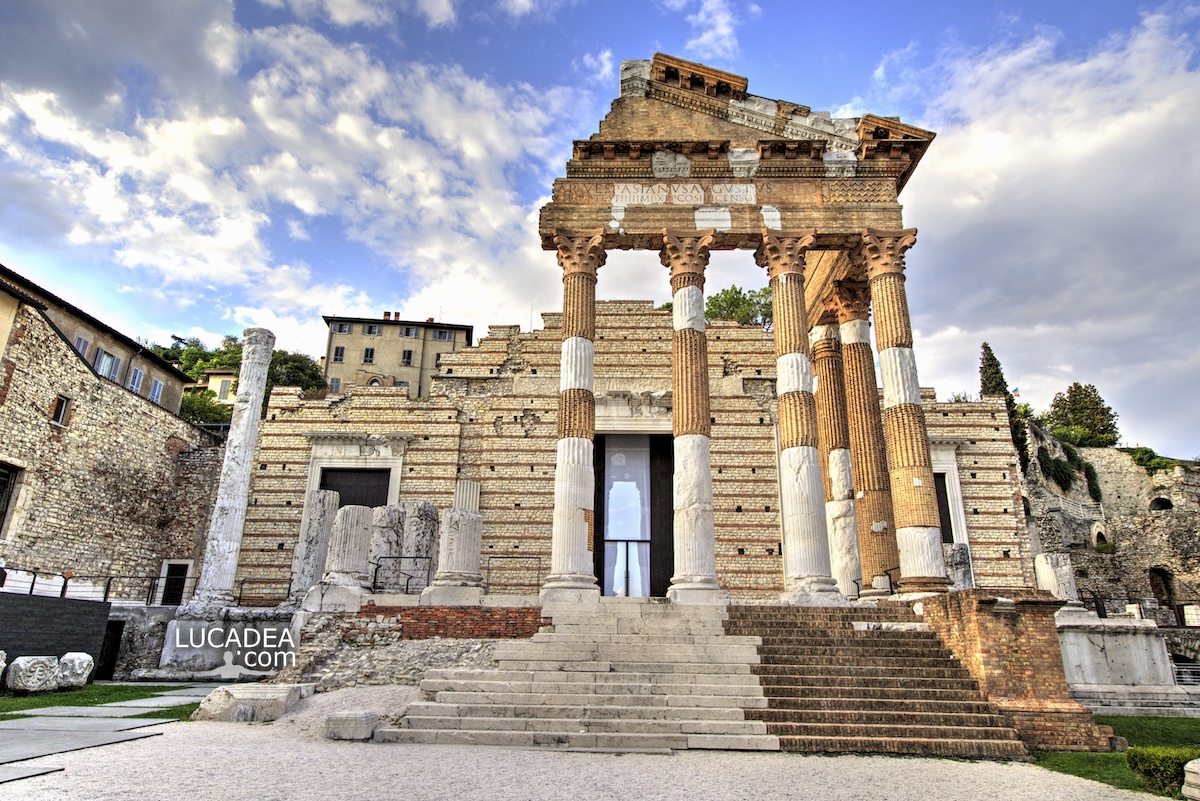The Roman Theatre of Brixia, today's Brescia
In the heart of the picturesque city of Brescia, there is a monument that tells stories of thousands of years and preserves the essence of a distant era: the Roman Theatre. This extraordinary masterpiece of engineering and culture is a tangible testimony to the greatness of ancient Rome and its lasting influence on European civilization.
The Roman Theatre of Brescia, dating back to the 1st century AD, is one of the most important archaeological sites in the region. Built at a time when Brixia, the ancient name of Brescia, was a thriving Roman colony, the theatre served as a cultural centre and a place of entertainment for the citizens.
The Roman Theatre of Brescia is a superb example of Roman architecture. Built on the Cidneo hill, it enjoys a panoramic view overlooking the city, offering spectators a magnificent spectacle even before the lights on the stage are turned on.
The cavea, the part intended for the public, is a masterpiece of engineering that can accommodate up to 15,000 people. The steps are divided into three sectors, reserved for different social classes, highlighting the rigorous organization of Roman society. The cavea is supported by an imposing structure of arches and pillars that still inspire the admiration of visitors today.
The stage, or “pulpitum,” is the central part of the theater, reserved for theatrical and musical performances. The proscenium, decorated with columns and statues, was the center of artistic activities involving drama, comedy, and even gladiators in specially adapted shows.
The Roman Theatre of Brescia was much more than a simple place of performances. It was a social and cultural centre, a meeting point where citizens of different social classes could share experiences and passions. The shows, in addition to entertaining, also served to educate and communicate the values of Roman society.
As the centuries passed, the Roman Theatre of Brescia fell into ruin, buried by the dust of time. However, during the Renaissance, interest in classical antiquity was renewed, and the theatre once again became an object of study and appreciation. During the 19th century, major excavation and restoration works were undertaken, bringing to light the magnificent monument we admire today.
Today, the Roman Theatre of Brescia is an archaeological site open to the public, a place that transports visitors back in time. Numerous cultural events and shows are organized in the theatre, allowing modern citizens of Brescia to connect with their historical roots.
The Roman Theatre of Brescia is more than just a stone structure; it is a portal that connects us to ancient Rome, tells us stories of glory and intrigue, and invites us to reflect on the enduring influence of Roman civilization on our daily lives. Through its imposing presence, the theatre continues to inspire and educate, a silent witness to an era that lives on in the hearts and minds of those who visit it.
Have you ever visited Brescia? Add your own comment or go to the bottom of the site to read what other visitors have written.
Photo taken with Canon EOS M100 and lens Canon EF-M 11-22.
To see all the photos I took at Brescia Castle click here:

Ecco dove si trova il teatro:
The theatre was built in the Flavian era, like the nearby Capitolium[1] (to which it was connected by a portico), and remodelled during the principality of Septimius Severus, in the 3rd century. It was probably damaged by the same fire that, in the 4th century, caused the partial collapse of the temple building located in the immediate vicinity, and by an earthquake in the 5th century, which completely destroyed the stage and the wall overlooking the street. Despite this, it was used until 1173.
Continue and learn more on Wikipedia
The Roman Theater of Brixia, today’s Brescia – Le théâtre romain de Brixia, l’actuelle Brescia – El Teatro Romano de Brixia, la Brescia actual – O Teatro Romano de Brixia, hoje Brescia – Das römische Theater von Brixia, dem heutigen Brescia – Nhà hát La Mã Brixia, Brescia ngày nay – 布里西亚罗马剧场,即今天的布雷西亚 – ブリクシアのローマ劇場、現在のブレシア
The text of the post was written with the help of ChatGPT, a language model from OpenAI.


